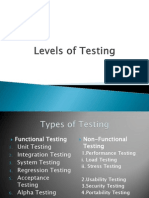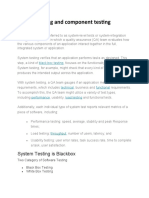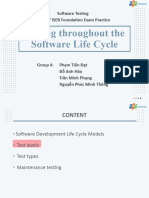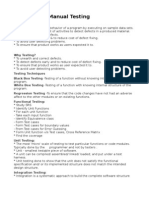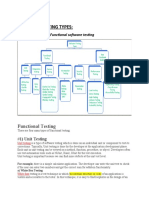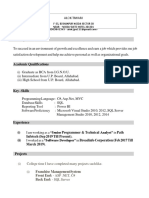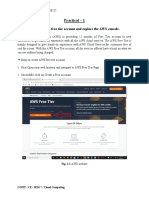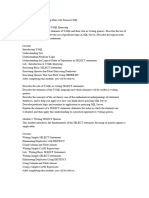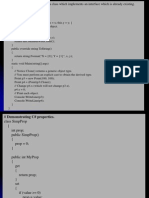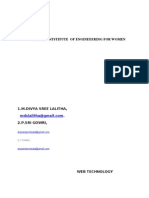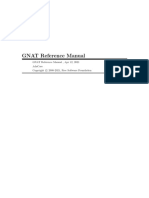0% found this document useful (0 votes)
98 views4 pagesTesting Document: V - Model of Testing
The document discusses different types of testing used in software development including functional and non-functional testing. It provides details on the V-Model testing approach and various testing methods such as unit testing, integration testing, system testing, user acceptance testing, performance testing, security testing and more. The types of functional testing verify that software functions as intended while non-functional testing focuses on aspects like performance, compatibility and security.
Uploaded by
Neeraj BalaCopyright
© Attribution Non-Commercial (BY-NC)
We take content rights seriously. If you suspect this is your content, claim it here.
Available Formats
Download as DOCX, PDF, TXT or read online on Scribd
0% found this document useful (0 votes)
98 views4 pagesTesting Document: V - Model of Testing
The document discusses different types of testing used in software development including functional and non-functional testing. It provides details on the V-Model testing approach and various testing methods such as unit testing, integration testing, system testing, user acceptance testing, performance testing, security testing and more. The types of functional testing verify that software functions as intended while non-functional testing focuses on aspects like performance, compatibility and security.
Uploaded by
Neeraj BalaCopyright
© Attribution Non-Commercial (BY-NC)
We take content rights seriously. If you suspect this is your content, claim it here.
Available Formats
Download as DOCX, PDF, TXT or read online on Scribd
/ 4
















